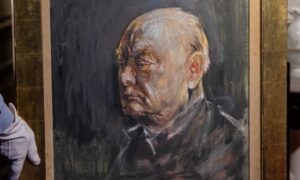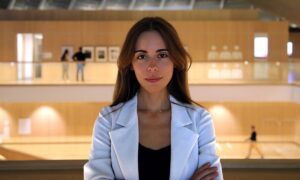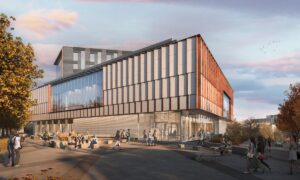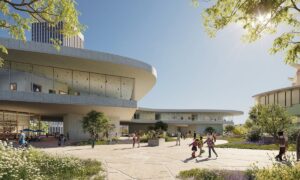[ad_1]
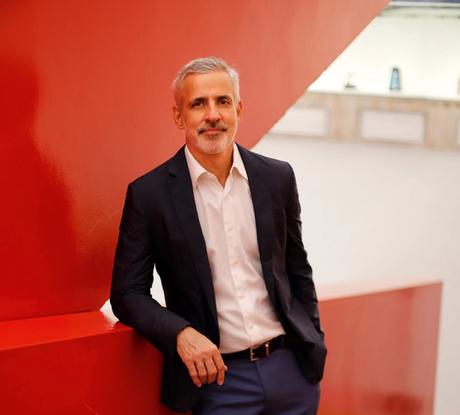
When Adriano Pedrosa, the Brazilian artistic director of this year’s Venice Biennale, announced his concept for the international exhibition, it was clear it was a hugely distinctive show. Stranieri Ovunque—Foreigners Everywhere includes 332 artists—a mixture of contemporary practitioners and late artists who worked mainly in the 20th century—mostly from or based in Latin America, Africa, the Middle East and Asia. It befits the first Venice Art Biennale organised by a curator born and based in the Global South—Pedrosa is the artistic director of Museu de Arte de São Paulo Assis Chateaubriand (MASP).His exhibition concept is also consistent with his long-term curatorial project: last year, MASP presented the exhibition Indigenous Histories, having done a similarly sweeping and groundbreaking show Afro-Atlantic Histories in 2018. And Pedrosa’s attention to global Modernisms and introducing key 20th-century artists from the Global South to European audiences was clear when he oversaw the Spotlight section of Frieze Masters between 2012 and 2015. Pedrosa has also noted that he is the first out queer artistic director of the event and this too has influenced his thematic approach.The name of the exhibition, in a work created for the biennial by the collective Claire Fontaine Courtesy of the artists and Galerie Neu, BerlinThe title Foreigners Everywhere relates to a work by the French collective Claire Fontaine. But Foreigners Everywhere also relates to another collective, in Italy. Tell us about those origins.Claire Fontaine is a collective, a woman and a man, a couple now based in Palermo, but originally founded in Paris. They have been making neon sculptures since 2005, which read, in different languages, the expression “foreigners everywhere”. They are written in over 50 languages—Western languages, non-Western languages, Indigenous languages; some, in fact, are extinct. And Claire Fontaine in turn appropriated the expression from the name of another political-activist collective from Turin in Italy that was fighting racism and xenophobia in Italy at the beginning of the 2000s.You are presenting this exhibition, which you describe as a celebration of various peoples, in one of the most famous cities in Italy, with the far-right anti-immigration Georgia Meloni as prime minister. How deliberate is that?Well, it plays an important role in Italy, but also around the Mediterranean and in the world, because of the crisis around migration that we have going on. I have had it as a possible title for about ten years. I always felt that it would have been wonderful to do an exhibition, particularly in Italy, using this expression as a starting point. But the expression has many different connotations. It’s quite political, but it’s also quite poetic. It has many different levels.Wherever you go there are always foreigners around you, but you are also always a foreigner yourself in a waySo first, one could say that wherever you are, wherever you go, there are always foreigners around you, but also on the other hand that wherever you go, you are always, deep down, a foreigner yourself in a more subjective manner—in a psychological, psychoanalytic way of thinking of “the foreign”. It also evokes Freud’s Unheimlich, the famous text that he wrote on the uncanny, where what is strange is also quite familiar.It also has a site-specific meaning in Venice, because Venice is a city of foreigners, a city with about 50,000 inhabitants, and that population more than triples during peak days because of the tourists that come into the city. So foreigners are indeed everywhere in Venice. And the Biennale itself has always been a celebration of foreign artists since 1895—of course, Italian artists as well, but also many foreigners. It’s an international exhibition and it has always been like that.But also, from the theme of the foreigner, I unfold into other subjects. So the initial subject is the foreigner, the migrant, the expatriate, the refugee, the diasporic subject. But from that, I unfold into, first of all, the queer, because the first definition of “queer” is “strange”. And there are these connections in Portuguese, French, Spanish and Italian, between estranho and estrangeiro, étrange and étranger, the strange and the foreigner. So the queer subject becomes a subject of interest. I myself also identify as a queer man. So many of these subjects go back to my own personal life: I, of course, have been a foreigner in many instances in my life, carrying a third-world passport, which is always difficult when we travel around.The third subject is the outsider artist, which is the strange, the different, linked also to the folk artist, the self-taught artist, and in Brazil and Latin America, the subject of the artista popular, the artist from the people, as it were. And finally, Indigenous artists—again, very important in Brazil and Latin America. And the Indigenous person is often treated as a foreigner in his or her own land. These are the four main subjects of interest of what I’m calling the Nucleo Contemporaneo, the contemporary nucleus of the exhibition. And then we also have a Nucleo Storico, a historical section.You say you feel “implicated” in this exhibition. You’re curating it from your experiences of seeing art around the world, of working with artists, but there’s a personal investment, too. Is that a consistent approach: investing yourself in the wider project of curating?I can’t always do that, but I always try to do it. We did a whole year at MASP devoted to Indigenous artists and Indigenous histories. I’m, of course, not Indigenous, but I come from a country and a continent where this is important. Again, we did a full year devoted to Afro-Atlantic histories. And of course, I’m not Afro-Atlantic or Black, but this is an important part of our culture in Brazil. I felt a responsibility towards the many artists, many scenes, many histories in the Global SouthBut here in Venice, yes, I do feel quite implicated in these four subjects. Also as the first curator actually living and based in the Global South. Of course, before me, there was the late, great Okwui Enwezor in 2015, who was the first curator from the Global South, though he was living and working in Munich at the time and working quite a lot in the US as well. So I’m the first one based in the Global South. For an exhibition that started in 1895, that’s quite a turning point. In that sense, I also felt a certain degree of responsibility towards the many artists, many scenes, many histories in the Global South. Perhaps that’s why I have so many artists in the exhibition as well!This is an exhibition predominantly of contemporary art, but the majority of artists are in the Nucleo Storico and represented by one work. It seems that you are reintroducing artists who should have been part of the Biennale in the past but were denied that possibility, for various reasons.Yes, exactly. That’s important to mention. When you look at the list, you see there are more historical artists than contemporary artists. But the Nucleo Storico, which has around 200 artists, only occupies three sections. Two sections in the central pavilion in the Giardini devoted to portraits and to abstractions and another section in the Corderie of the Arsenale is devoted to the Italian diaspora, and is called Italians Everywhere. If you look at the past couple of decades, perhaps even since the late 1990s, we see how artists from the Global South have been participating, particularly in biennials, but also in museum exhibitions. You will see them represented by galleries in different parts of the West—London and New York and Paris. So there is a significant presence of artists from the Global South within the contemporary field, but that is not happening as much with the 20th century. And the 20th century is the temporal arc of the Biennale itself. So I thought it was interesting to reintroduce these artists, because many of these artists are iconic figures, important figures in their own countries. But they’re not well known at all internationally.The Gaggiandre historic shipyards form part of the Arsenale, one of the Biennale’s main venues Andrea Avezzu, courtesy of La Biennale di VeneziaWe are familiar, of course, with the histories of Modernisms in Europe, particularly in Western Europe, and the US. And I and many critics and curators in my country will know the histories of Modernism in our own country, perhaps in our own region, but not so much about Africa and the Middle East and Asia. So the Nucleo Storico then focuses largely on what I’m calling Modernisms in the Global South, artists working in the 20th century in Latin America, Africa, the Middle East, and particularly South and Southeast Asia, which are, I think, one of the most exciting topics in art history today. I would have needed ten years and a group of ten people to put together a really comprehensive exhibition around that, but it is a subject that I’ve been looking at for the past ten or 15 years or so. The Biennale offers this incredible opportunity, with a lot of resources, enthusiasm and support from colleagues all over the world. I thought it was a possibility to propose something which is really more speculative, it’s more of a provocation. There will be, of course, many gaps, but it’s quite exciting to see how these artists have never really been juxtaposed in an exhibition like this.In the Italians Everywhere section, you’re using a much-loved display strategy among contemporary artists and curators—Lina Bo Bardi’s system designed for MASP. Why did you choose to do that? It’s a neat way to emblematise your ideas, but it’s also a beautiful way of displaying art.Yes, quite beautiful, quite radical. Again, the Italians Everywhere section is really a play with the title Foreigners Everywhere. So here I am, the curator from the Global South, coming to the Biennale doing a project that’s focusing on Africa and Latin America and the Middle East and Asia. But I thought it’s really important also to propose a relationship with Italian art history.I live in a city and in a country where we have the largest Italian diaspora in the world—Brazil–and the second country is Argentina. I also work at a museum with a strong Italian lineage, not only because of Lina Bo Bardi, who designed our building and the wonderful and radical glass easel display system, but also Pietro Maria Bardi, who was the founding director. So we are gathering 40 Italian artists, first-generation and second-generation Italian artists who lived in different parts of the world, mostly in Latin America, but also in Africa and Asia. And Lina Bo Bardi of course, this extraordinary figure who won the Golden Lion at the Architecture Biennale recently, in memoriam. She is, for me and many of us in Brazil, the most emblematic Italian diasporic figure. Her system will look quite incredible in the Arsenale. She was always interested in this relationship between the very fine European collection pieces in the museum and a certain rawness of the concrete, of the rubber, of the glass materials in her architecture and her exhibition displays. So we’ll have that rawness in the Arsenale as well because of the architecture of the space, with the exposed bricks. It will be interesting to see that contrast.Will the four themes in the Nucleo Contemporaneo be intersectional and overlap through the show?Yes, because we also have queer artists who are immigrants and we have indigenous artists who are outsider artists, etc. In terms of the display, I was trying to make connections between the works, particularly in the central pavilion, because we have these very distinct rooms. So there are many rooms around different dialogues, for example. Having said that, while we have queer artists throughout the exhibition, there’s one particular section that ended up gathering many queer artists, trans artists and non-binary artists from different parts of the world. There are also a number of thematic threads or leitmotifs that came up. That’s also quite interesting.One of those leitmotifs is the use of textiles through the show.Yes, there are textiles throughout the show. Again, it’s not a topic or subject of the exhibition, it emerged quite organically, but it is something of interest to me. When we were putting the artists in the floorplan as we developed the exhibition, we ended up doing a large section devoted to works around textiles. But there are also works by artists working in textiles in the Nucleo Storico.The second interesting motif that, again, came up very organically is families of artists—artists related by blood. Suddenly I saw that this was coming out in the exhibition. It wasn’t a starting point for the exhibition, but after I saw that happening, I felt it was interesting to try to develop that. I don’t really start with a precise and rigid framework, I allow the research to inform the framework as well. So we have mostly Indigenous artists working in family groups or arrangements: for example, from Guatemala, Andrés Curruchich and Rosa Elena Curruchich and from Colombia, Abel Rodríguez and his son, Aycoobo (Wilson Rodríguez). Then there is Fred Graham and his son, Brett Graham, who are Maori artists from Aotearoa/New Zealand. But then there is Susanne Wenger, an Austrian woman who migrated to Nigeria and her adopted son, Sangodare Ajala, a wonderful artist working in textiles and batik, as well. They are not in a section, you see them throughout the exhibition, but always in pairs, in the same room or next to each other.Six artists in Foreigners EverywhereWe take a look at six contemporary artists—hailing from Africa, South America, Asia and Europe—whose work has been picked by Adriano Pedrosa for the Biennale exhibition.Anna Maria MaiolinoAnna Maria Maiolino, one of two winners of the Golden Lion for Lifetime Achievement Livia GonzagaOne of two winners of the Golden Lion for Lifetime Achievement this year (Nil Yalter, the Cairo-born artist based in Paris is the other), Maiolino also represents a key aspect in Adriano Pedrosa’s concept for Foreigners Everywhere: the Italian diaspora. Born in Scalea, Italy, in 1942, she migrated first to Venezuela and then to Brazil, where she developed a distinctive activist and conceptual practice, often expressed through performance and photography—What is Left Over (1974) features the artist gesturing to cut out her own tongue. She moved to sculpture in the 1990s, presenting bodily forms in clay, and will make new sculptures and installations in this material for the Biennale.Leilah BabiryeLeilah Babirye uses found objects in her large-scale sculptures Mark HartmanBabirye uses ceramics, wood and found materials in sculptures addressing queerphobia in her native Uganda, from where she fled to New York having been outed in a local newspaper. Her often-monumental figures are adorned with detritus, often including bicycle parts, like inner tubes or chains, to evoke hair, and gears to conjure jewellery. Babirye actively uses found material to address the term abasiyazi, which means sugarcane husk, but also rubbish; it is a homophobic term in the Luganda language. The sculptures’ directness speaks to a defiant strength, a raw beauty, in the face of adversity.Yinka ShonibareYinka Shonibare has created a foundation for artists in Nigeria Tom JamiesonIt is a busy Biennale for Shonibare, who has a “double presence” as Pedrosa describes it: he is also among the artists in the Nigeria pavilion. In many ways he is an emblematic figure in Pedrosa’s schema: he was born in London, grew up in Lagos, returned to London to become an artist and works between the UK and Nigeria, where he has created a foundation for artists. He has used his autobiography as a means of exploring the legacies of colonialism and its impacts in the present, including migration. And his trademark tool, whether in sculpture, installation, painting or photography, is batik fabric, so he is a purveyor of one of Pedrosa’s leitmotifs: textile art.Abel RodríguezRodríguez is among the largest number of Indigenous artists to feature in the Biennale’s international exhibition to date, and is also one of the artists exhibiting alongside a blood relation—Rodríguez’s son, known as Aycoobo. Born in Nonuya in the Colombian Amazon in 1941, he gained an exceptional knowledge of plants. After escaping violence in the rainforest, he moved to Bogotá where he was given the tools to make illustrations of flora for an organisation protecting Amazon biodiversity. His drawings—precise yet distinctive in form—featured in Documenta 14 in 2017.Madge GillAn ink drawing by Madge Gill featuring the abstract spiritual elements she often used Courtesy of madgegill.comA self-taught artist, Madge Gill (1882-1961) was born in London’s East End,andlived briefly in a children’s home. She lost sight in one eye after an illness and after returning to health was apparently “possessed” by Myrninerest, a spirit-guide who spurred her to create the work that will feature in the Venice show. She signed the drawings with Myrninerest’s name and refused to sell them because they belonged to her possessor. Gill achieved some fame in her lifetime, but her star has risen considerably as spiritualism and autodidactism have gained more art historical interest.Salman ToorSalman Toor explores the lives of queer men of colour in his paintings Lauren Silberman There is not much classic painting on canvas in Pedrosa’s exhibition, but Toor’s scenes of fictional figures in atmospheric settings evoke multiple aspects of Pedrosa’s concept. Born in Pakistan, Toor went to New York to study and it is there that his career has gone stratospheric. Toor explores the lives of queer and mostly Brown men with formal rigour and flair. But while intimate and erotic, there are undercurrents of violence and ostracisation within the worlds he depicts that also suggest precarity.• Stranieri Ovunque—Foreigners Everywhere, Giardini and Arsenale, 20 April to 24 November
[ad_2]

